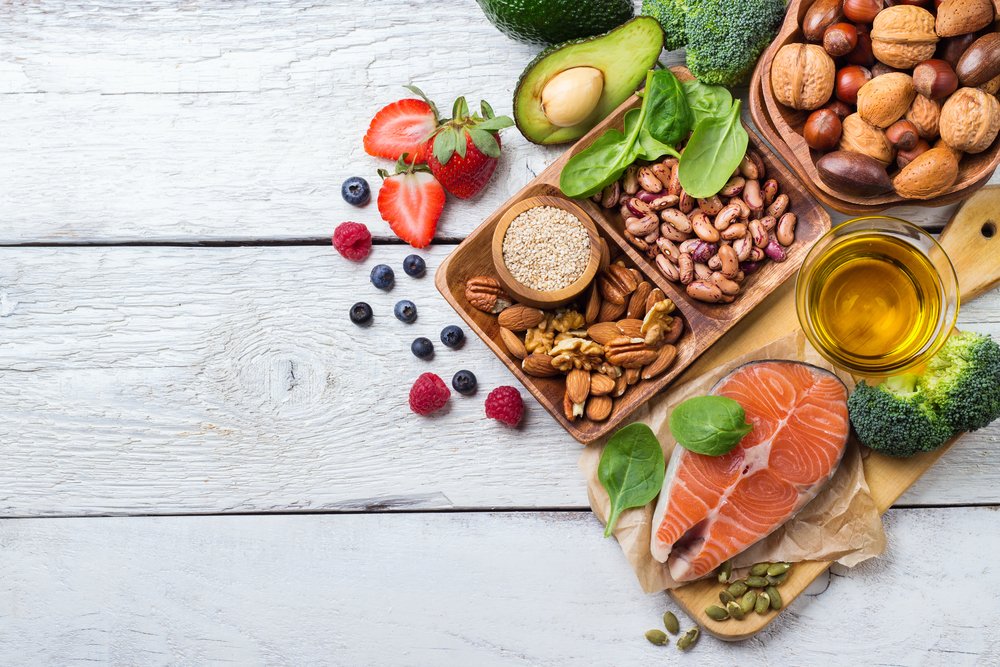Why weight can be harder to shift in perimenopause…

Commonly with perimenopause, especially in the later stages, weight can become more stubborn to shift and we can see insulin resistance develop. Fatty liver can be common also. Thyroid disease can also start to play a role. All of these factors can impact on weight gain and cravings.
Oestrogen has a metabolic effect on insulin. It helps insulin to be more sensitive. Insulin helps bring glucose into the cell, which it needs for energy and fuel. As we transition through perimenopause our oestrogen levels drop, which can impact on insulin sensitivity.
Insulin resistance
Insulin is a hormone important for moving glucose from the blood stream into each cell to make sure glucose is available for energy. In the case of insulin resistance, the cells in the body are less receptive to glucose. This can lead to the cells not getting the energy they require and glucose can build up in the blood, known as high blood sugar. An ongoing pattern of this can lead to type 2 diabetes.
Symptoms of insulin resistance can be weight gain (especially around the middle), poor energy, issues with concentration, sugar cravings, skin tags and darker skin patches.
Our brain cells need glucose for energy. Oestrogen is needed to help the brain cells use glucose. During peri-menopause, as we move into the lower oestrogen states, this can really impact on the energy of the brain.
Insulin resistance risk increases in peri-menopause and can make symptoms of brain fog and mental health worse. I will speak more on how you can help with insulin resistance in further chapters. If you are struggling with weight gain, poor mood, sugar cravings, low energy its important you are tested for insulin resistance and diet changes are made.
How do we help reduce insulin resistance?
Protein:
Protein is essential for muscle building and cell repair. Protein helps to stabilise healthy blood glucose, which assists healthy brain function, moods and energy.
We should be aiming for approximately 1 gm of protein per kilo of our ideal body weight, or about a palm size portion with each main meal.
Protein is found in animal products such as meat and cheese, fish and in beans, nuts, seeds and tofu.
Movement:
Seriously, exercise is something I struggle with as I simply don’t like it. Who else feels this way? However, I am reminded to exercise because of the benefits to my body. Exercise works by improving glucose uptake into the cells and by building muscle which helps with insulin sensitivity.
Find something you enjoy- personally I find that Pilates and walking is something I enjoy more than other forms of exercise. Movement is the goal- start by doing 10 minutes and build up!
Intermittent Fasting
Intermittent fasting is a pattern of eating that allows fasting time, which can help improve insulin resistance.
During fasting, your cells can be trained to burn ketones, rather than glucose. This can help weight loss and reduce food cravings. There are many health benefits to fasting, including supporting healthy brain function.
There are several types of intermittent fasting. You might have heard of 5:2 (which reduces calories to two days a week). My preferred method is an eight-hour eating period, for example start your day with a protein rich meal at 10am, and finish eating by 6pm with a normal dinner. Your main goal is to fast overnight.
If you are underweight or following a low-calorie diet, fasting is not for you.
If you are still hungry with intermittent fasting, consider if you are having enough protein in the day. You may need a gentler approach with a 9 or 10 hour eating window.
Low Carb Diet
Following a ketogenic or low carbohydrate diet can also be another option. This puts your body into ketosis, whereby your own fat cells are burned for energy, rather than using glucose for energy.
This diet is based around protein and fats and reducing carbohydrates to below 50gm daily.
Foods to avoid if you are insulin resistant
– Concentrated sugar- this is the sugar from soft drinks, fruit juice, sweets, dried fruit and breakfast cereals.
– Processed foods- these can contain concentrated sugar but also harmful fats such as trans fats. These are inflammatory to the body.
– Fruit is generally ok. It still contains fructose but in low amounts and is combine with fibre and nutrients. Fruits such as berries are particularly good as these have a lower glycaemic index.
Supplements that can help insulin resistance
– Magnesium. 300-600mg daily in a glycinate form
– Chromium – helps insulin signalling.
– Inositol- helps insulin work better in cells.
– Berberine- there is good clinical evidence for berberine for insulin resistance and liver health. Only take for 8 weeks at a time, then have a break as berberine can impact on the gut microbiome.
Thyroid Disease
The thyroid is a butterfly shaped gland that sits at the bottom of your neck. It is important for metabolic function- it helps with controlling energy and weight.
An underactive thyroid (hypothyroidism) is the most common issue with the thyroid for women in perimenopause. The loss of progesterone at this time can reduce free thyroid hormone and may trigger underlying autoimmunity.
Common underactive thyroid symptoms include:
– Weight gain
– Feeling the cold
– Fatigue
– Body aches
– Constipation
– Dry skin
– Hair falling out, including outer third of the eyebrows
– Brain fog
Common symptoms of an overactive thyroid (hyperthyroidism) include:
– Anxiety
– Racing heart
– Hair loss
– Body aches
– Hot flushes
– Insomnia
– Fatigue
I commonly see thyroid disease missed with patients in clinic, make sure you have a full thyroid panel ordered if you are concerned- this includes TSH, T3, T4, reverse T3 and thyroid antibodies. Treatment for thyroid disease varies and you are best to seek support from a thyroid knowledgeable naturopath or nutritionist.
Need a meal plan to help? Check out my 4 week hormone health meal plan available in my online store on this site
Want more help? Join my self paced 6 week course “Feeling Fabulous & Thriving Through Past Peri”
Wait list now open (starts May)







Responses